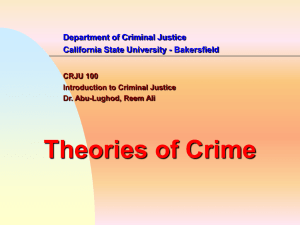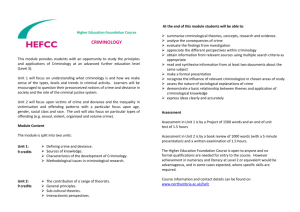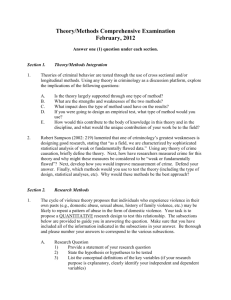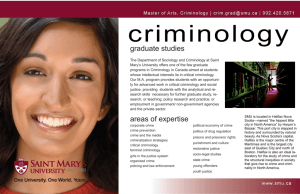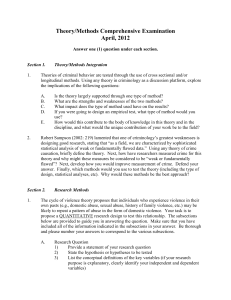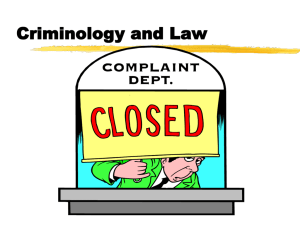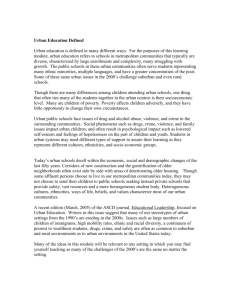Study sheet for final exam in criminology
advertisement
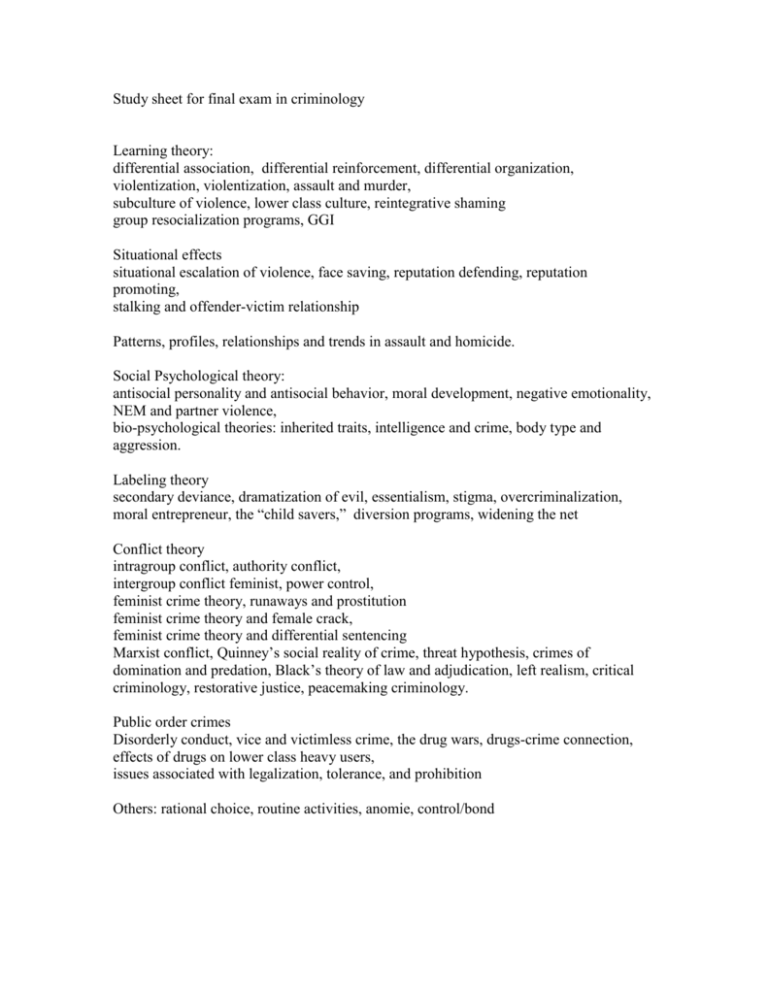
Study sheet for final exam in criminology Learning theory: differential association, differential reinforcement, differential organization, violentization, violentization, assault and murder, subculture of violence, lower class culture, reintegrative shaming group resocialization programs, GGI Situational effects situational escalation of violence, face saving, reputation defending, reputation promoting, stalking and offender-victim relationship Patterns, profiles, relationships and trends in assault and homicide. Social Psychological theory: antisocial personality and antisocial behavior, moral development, negative emotionality, NEM and partner violence, bio-psychological theories: inherited traits, intelligence and crime, body type and aggression. Labeling theory secondary deviance, dramatization of evil, essentialism, stigma, overcriminalization, moral entrepreneur, the “child savers,” diversion programs, widening the net Conflict theory intragroup conflict, authority conflict, intergroup conflict feminist, power control, feminist crime theory, runaways and prostitution feminist crime theory and female crack, feminist crime theory and differential sentencing Marxist conflict, Quinney’s social reality of crime, threat hypothesis, crimes of domination and predation, Black’s theory of law and adjudication, left realism, critical criminology, restorative justice, peacemaking criminology. Public order crimes Disorderly conduct, vice and victimless crime, the drug wars, drugs-crime connection, effects of drugs on lower class heavy users, issues associated with legalization, tolerance, and prohibition Others: rational choice, routine activities, anomie, control/bond
